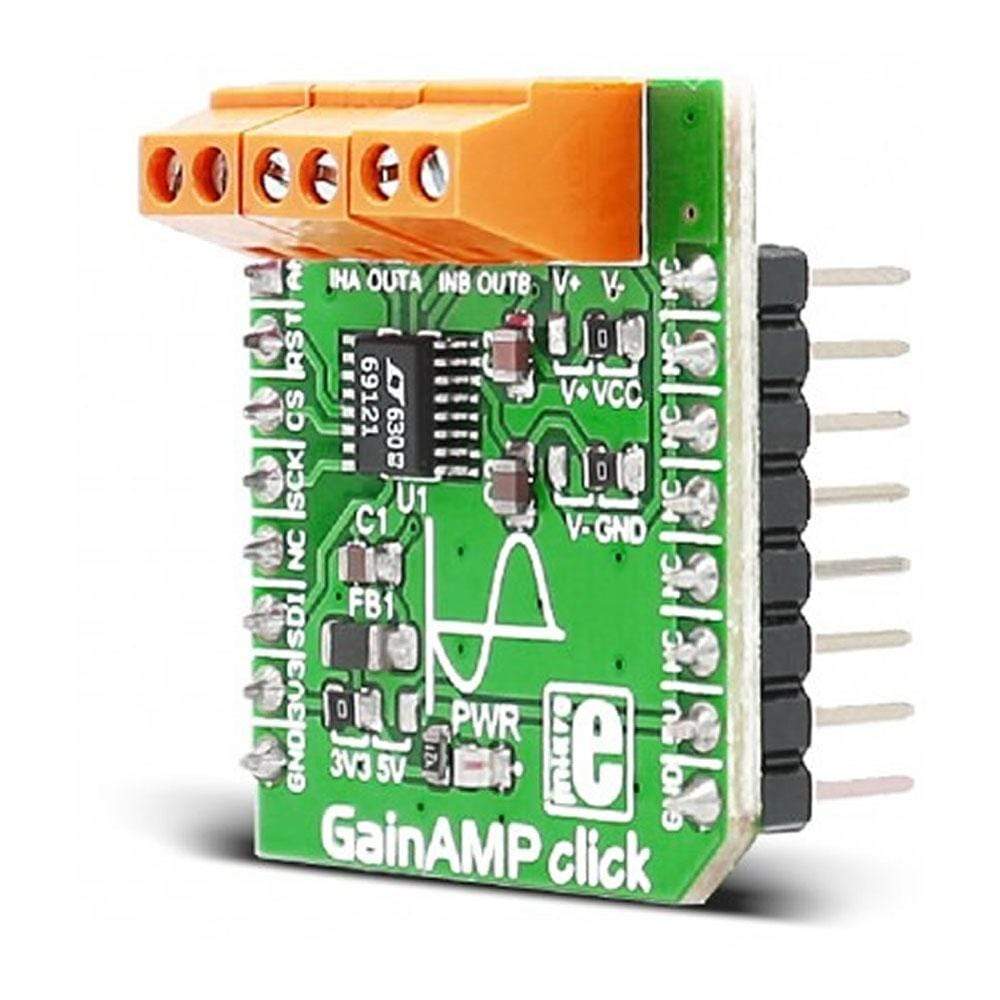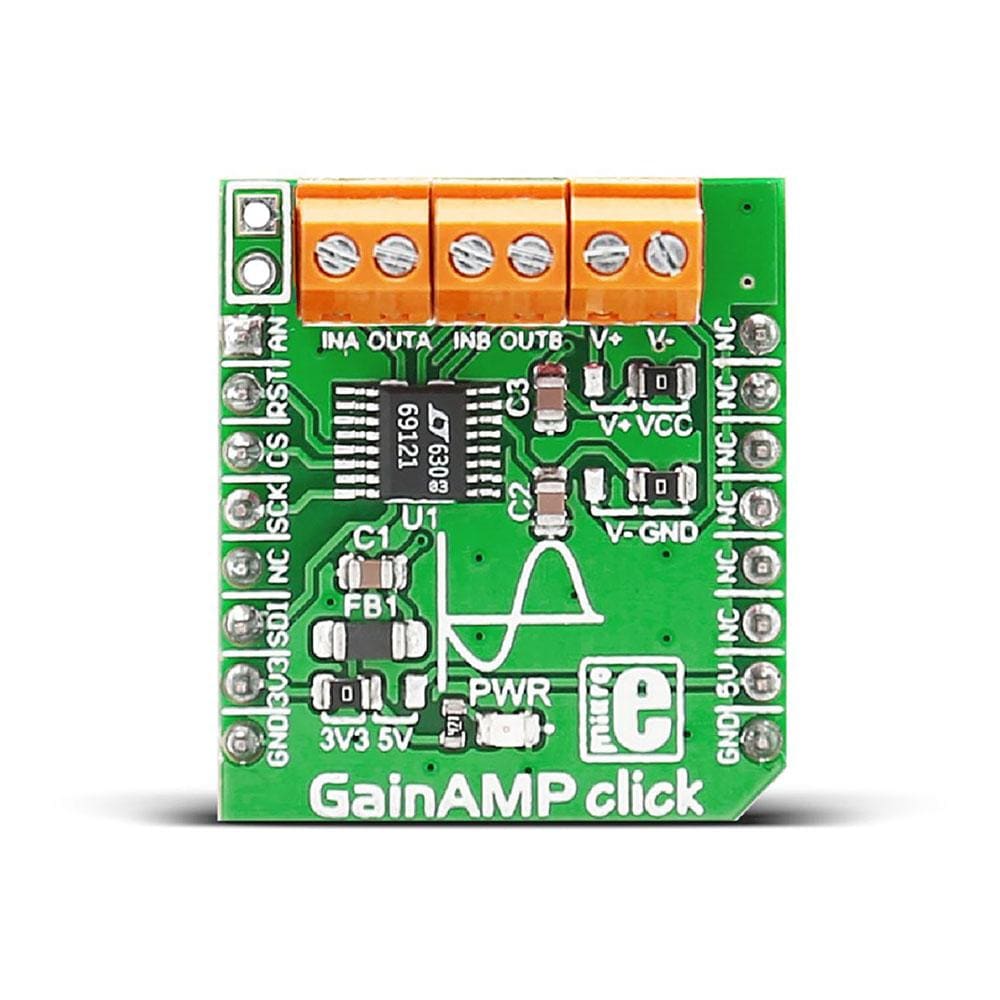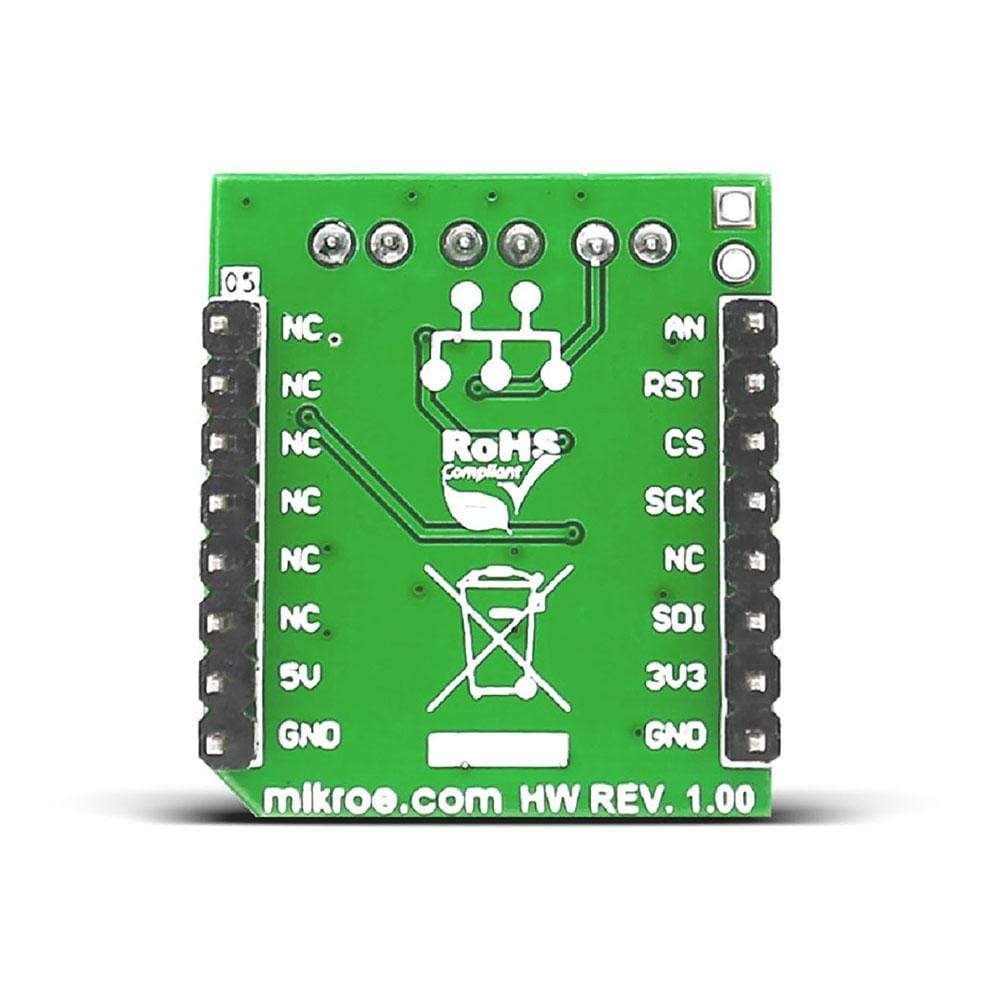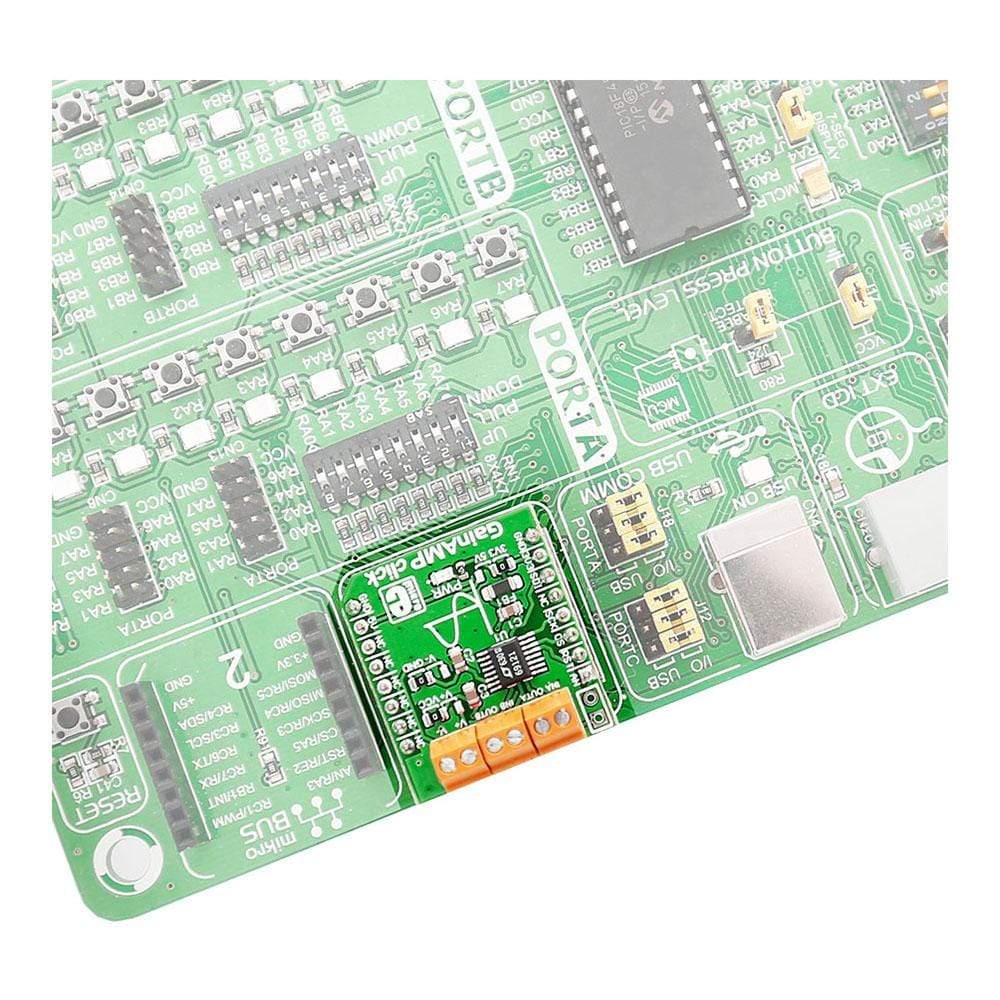



Overview
The GainAMP Click Board™ is based on the LTC6912 dual-channel, low noise, digitally programmable gain amplifier (PGA).
The GainAMP Click Board™ is designed to work on a 3.3V or 5V power supply. It communicates with the target MCU over the SPI interface, with additional functionality provided by the following pins on the mikroBUS line: AN, RST.
Downloads
Das GainAMP Click Board™ basiert auf dem zweikanaligen, rauscharmen, digital programmierbaren Verstärkungsverstärker (PGA) LTC6912.
Das GainAMP Click Board™ ist für den Betrieb mit einer 3,3-V- oder 5-V-Stromversorgung ausgelegt. Es kommuniziert mit der Ziel-MCU über die SPI-Schnittstelle, wobei zusätzliche Funktionen durch die folgenden Pins auf der MikroBUS-Leitung bereitgestellt werden: AN, RST.
| General Information | |
|---|---|
Part Number (SKU) |
MIKROE-2555
|
Manufacturer |
|
| Physical and Mechanical | |
Weight |
0.02 kg
|
| Other | |
Country of Origin |
|
HS Code Customs Tariff code
|
|
EAN |
8606018710225
|
Warranty |
|
Frequently Asked Questions
Have a Question?
Be the first to ask a question about this.




